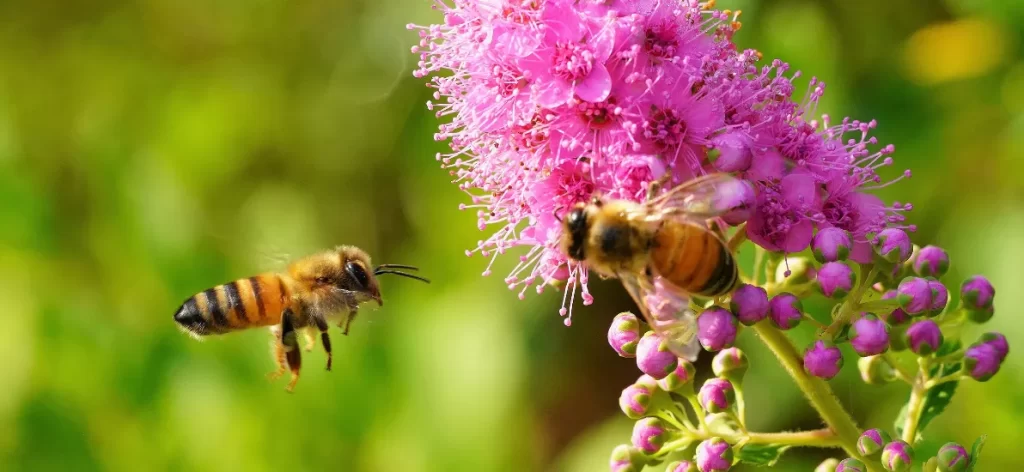Good-tasting honey is considered as one of the most delicate foods. Even small children know who is responsible for making this treat which is the most natural of them all.
However, not everyone knows how bees make honey. Which ingredients do they use to make honey, what is the process, why is comb necessary, why are there many types of honey? These are some of the topics I will address in this article.

Why Bees Make Honey?
Firstly, bees make honey in order to ensure a food source for “rainy days” when there is nothing to feed on. In this way, they can enjoy the sweet honey which is safely housed in the beehive.
Apart from using it for brood feeding, honey is essential for worker bees which spend huge amounts of energy while collecting nectar and pollen, or keeping the optimum temperature in the colony, particularly tending for the brood.
Honey is also important for wax production. Bees which produce wax use a lot of honey in the process, the better the grazing is, the better the wax and comb productions will be.
During the season, bees will make a lot more honey than they actually need. The remaining amounts are collected by humans for their own needs.
In order for the colony to function properly on a yearly basis, bees need between 80 and 120 kilograms of honey.
What Is Comb?
Before I answer the question how bees make honey, it is important to familiarize you with the comb, a term that is closely related to honey. Comb is very important for making honey. The internet is full of long articles addressing this topic; however I will do my best to explain the most important points in the shortest way possible.
Comb is actually a specialized storehouse. The size of combs is commonly identical – 5 millimeters in diameter. Basis for combs is a frame with a waxed sheet of paper in the middle. A beekeeper places the frame inside a beehive, and bees form combs on both sides of the framed sheet.
A bee’s nest consists of combs, which house bees and their brood. Combs are a collection of six-sided cells regularly placed one to another, so there is no space between them.
This type and shape of cell arrangement allows bees to use the available space in the most efficient way for food storing. And the food, of course, is honey and pollen.
If bees built the cells in the shape of a circle, there would be additional space between, and therefore less space would be used. By building cells six-sided, bees achieve the most economical way of building, as well as comb structure strength.
Honey bees build three types of cells: queen cells, worker cells and drone cells.
A queen cell is a type of cell where a queen bee is housed.
A worker cell is used for housing worker bees and for storing honey and pollen.
A drone cell is the same shape as a worker cell, slightly larger, however, a drone brood housed in the cells overlap with the coverings in the shape of a half-circle. These cells house drone bees and are used for storing honey and rarely pollen.
Building A Comb
Bees start building a comb by first attaching a row of wax sheets (also called collective cells) to the roof of the beehive.
These cells are in the shape of half-prism, which bees use for further cell building. A cell is built in such a way that one corner of the prism faces upwards, the other corner faces downwards, and the parallel cell walls are built vertically. In this way, the following rows of cells are built in either horizontal or vertical order.
It takes about two minutes for a bee to process one wax sheet. During the building, honey bees take turns in a way that one bee places a wax blob, pastes and presses it, and then other bees follow the same procedure in the same order.
After adding the basis of the comb, the building procedure changes as well. The parallel wall cells are then built horizontally, and the following rows are further built diagonally.
How Bees Make Honey?
Ingredients Bees Use To Make Honey
You must have often asked yourselves how bees make honey. I know I have. Now that I have found myself surrounded by these small, hard-working creatures, I will try to describe, to the best of my knowledge, how this sweet and healthy product is made. Trust me; even the most modern machines cannot produce in a way that bees make it. Whenever I hear about this, I stop and I really think about it. Yes, this is true. Many ingredients and devices are needed to produce the best chocolate and other sweets. Hard-working bees are all it takes to make honey.
In order to make honey, bees use two ingredients: nectar and honey dew.
Nectar is a sweet liquid which is excreted by glands housed inside a flower, and sometimes outside of a plant flower. Glands that excrete the nectar are called nectarians. Nectar consists of 80 percent water mixed with composite sugars. It takes at least three times the quantity of nectar to make one kilogram of ripe honey.
Honey dew is a sweet, sticky substance excreted by aphids whose entry apparatus is adapted for stinging and suction procedures. With the use of a stinger, which is a part of the proboscis, plant juices are sucked out and often deposited on leaves and tree branches in the form of drops. Bees later collect these drops and deposit them inside a beehive.
Honey made of dew is called honeydew and is different from honeys made out of nectar (blossom honey).
Process Of Collecting Nectar
During flying around blossoms, bees locate the nectar and deposit it through esophagus inside a honey stomach, which is separated from other digestive organs by a special vent. This vent releases the necessary amount of food a bee needs to supplement the loss of energy.
Bees transport the remaining and the largest amount of nectar, to the beehive and deliver it to the youngest members of the colony. A bee needs to visit between 100 and 1500 flowers in order to fill out its stomach with nectar, drop by drop. Bees can deposit only 70 milligrams of nectar inside, which is the equal weight as a bee itself.
Once a bee returns to the beehive, it delivers the nectar to at least one worker bee (which does not leave the beehive), who suck out the nectar from the proboscis. Bees sometimes first feed the nectar to the young or the adult bees, but it is primarily used to make honey.
Nectar Processing Procedure
“House” bees spend around half hour chewing nectar, just as a person chews a gum. Enzymes slowly dissolve composite sugars into single ones. This process makes nectar easily digestive and it helps all the stored deposits keep preserved from bacteria. After that, bees place nectar into the comb, drop by drop.
Water slowly evaporates from the nectar, therefore making the syrup denser. Bees even help dry the honey by beating its wings like a fan. When the syrup in the cell is appropriately firm, solid, and sticky enough, it officially becomes honey. Bees then cover the cells with wax lids. White wax is produced in the bees’ wax glands in the form of a flake. Honey is then stored and kept safe until it is time to be fed on. A bee colony can feed on between 55 and 90 kilograms of honey within a one year period.
Honey Bladder
As previously addressed, a bee possesses an organ which is called a honey bladder. It is used to temporarily store honey juice, which is later deposited in the comb cells of a beehive. Besides that, bees also have a type of vent, which prevents the return of food from the colon. In this way, bees deposit only the food surplus which is not needed at the moment.
In order to make one kilogram of honey, bees need to perform around 200.000 flower visits. A single bee needs to visit 150 flowers in order to fill out its honey stomach and transport the load into a beehive. Bees usually collect nectar in the immediate proximity of the beehive. Sometimes the distance is up to several kilometers. The farther the grazing location is, the lower the hoarding effect will be, and vice versa.
Why Are There Different Types Of Honey?
Have you ever wondered why there are so many different types of honey on the market? Each type of flower bearing plants produce nectar and pollen of different consistency, aroma and color.
In the season of acacia blooming, bees will intensively visit the acacia flowers. After the season has ended, beekeepers then open the beehives and collect the plain and clean acacia honey.
Other types of honey, such as meadow honey, chestnut honey, sage honey, linden honey or oilseed rape honey are made in the same way.
Some beekeepers move their bees to a specific location where only certain types of plants are abundant and in that way make a specific selection of honey.
In Conclusion
It has taken considerately more time than usual to write this article. I consider this topic to be more complex. It is always harder to write in your own words when something is as it is and cannot be changed. Two plus two always equals four.
In order to write about something and explain the procedures, it is necessary to spend more time reading, watching documentaries or having conversations with people with similar interests.
I sincerely hope that this article will provide you with the answers to your questions. I certainly had many questions after I had taken on beekeeping.
If you have any suggestions, or would like to share something new about this topic with me and other blog visitors, feel free to do so. I am looking forward to it.

